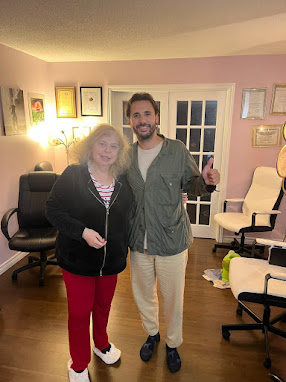Vocal Box Repair: Is There Such a Thing? And is it even possible?
For comparison, let’s look at classical ballet dancers: Everybody knows that ballerinas have to have a certain arch in their feet, especially females. It is detrimental to their careers if their feet are flat and not properly arched, because it would be difficult to do pirouettes; circling up to 32 revolutions (fouettés) with one leg while keeping the whole weight of the body on the other leg while the flat foot is virtually unable to hold the body weight.
Similarly for singers, the upper palette (located in the vocal box) also has an arch and curve. The deeper that arch is, the more the "body of the voice" will be projected. The palette arch, however, is not everything, as the sound also needs to be supported simultaneously by the lower abdomen and upper diaphragm, or else the whole lift of the voice becomes obsolete. Singers can avoid cracks in their voice and letting their sound “fall down” by lifting their voice into the facial cavities, where the facial muscles will also have to be supported by the arch of the upper palette, as well as by the abdominal muscles. Like in ballet, there is a lot of coordination involved between body parts and the human voice.
Can a damaged vocal box be fixed? Yes, to varying degrees based on individual cases. At the very least, it can be improved so that the sound will be much more steady, secure and at much less risk of falling and producing a crack. It is, however, very detailed and intense work for all parties involved.
Your pathway to recovery begins by utilizing the basics of speech. It requires attentive repetition of syllables, vowels and phrases. Then vocalizing different combinations of sounds will assure the control of duration of sound(s) as well as clarity and precision of pitch. The purpose and use of different combinations of sounds in musical performance (and also public speaking) can be very different and can require specific ways of applying the vocal/voice techniques. In the end, all of the work will lend itself to a better quality, frame, and body of sound; and thus will be instrumental in achieving greater voice projection, tone, inflection, diction and overall clarity.
All of this, of course, requires a trained specialist who understands the mechanics of voice, and is able to hear where the problems lie. Ultimately, it requires a voice repair specialist who also knows how to help you reconstruct your sound and heal your voice in general.
If, by chance, you are in need of voice repair, but do not want to resort to surgery, or are interested in preventing vocal box damage, you can learn more about our unique non-surgical voice repair programs at www.repairyourvoice.com and www.vocalscience.com





